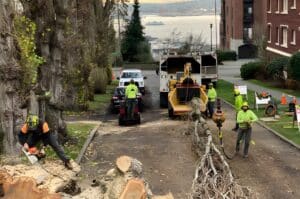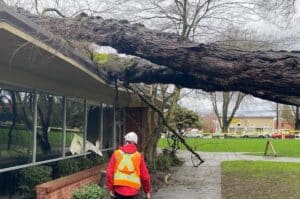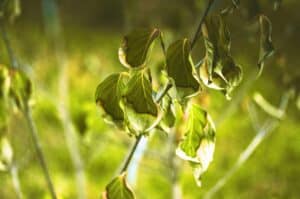The Need for Diversity in the Urban Forest
Urban Forests are unique ecosystems. Unlike traditional forests, urban forests often have a wide diversity of tree species. From Northwest natives, such as the Douglas-fir (Pseudotsuga menziesii) and Western Red-cedar (Thuja plicata), to exotic species such as the Monkey Puzzle (Araucaria araucana), Seattle is a global forest as much as
Urban Forests are unique ecosystems. Unlike traditional forests, urban forests often have a wide diversity of tree species. From Northwest natives, such as the Douglas-fir (Pseudotsuga menziesii) and Western Red-cedar (Thuja plicata), to exotic species such as the Monkey Puzzle (Araucaria araucana), Seattle is a global forest as much as it is a global city.
While we usually think of nonnative species as invasive, diversity in the urban forest helps keep it resilient. Biodiversity in urban landscapes is beneficial. Pests, pathogens, and other nuisances typically target a single type of tree species. For example, Elm trees were once some of the most common urban trees in North America. With the advent of Dutch Elm Diseased, or DED, the Elm has been decimated in cities across the United States, resulting in canopy loss, slope instability, and hazardous situations, including tree failure onto roadways and properties.
Diverse forests are not as susceptible to these species-specific disturbances. It is similar to the way vaccines prevent the spread of disease. When there is a greater variety in tree species, there are not as many hosts for these species-specific nuisances to travel to and from, reducing the range in which these pathogens and vectors can spread. Furthermore, if a single species succumbs to one of these threats, there will still be other tree species that remain unaffected.
Diverse forests often mean diverse flowers, attracting a number of different pollinator species to the scene. This helps keep bee colonies alive, and insures there is fruit, both for local wildlife and us humans.
Diversity in trees means diversity in flowers
Species diversity isn’t the only type of diversity that matters within the urban forest. Age diversity is equally important. Having trees at all stages of life ensures that there is always an urban forest, with the younger trees to replace the older ones as the march of time continues on. Furthermore, storms and other weather events often hit older trees harder. Younger trees need to be around to ensure the forest stays vital during these times, and that structural diversity is maintained.
Finally, if there is any other reason to have a diverse forest it’s aesthetics. As the age-old adage goes, “variety is the spice of life.” Diversity in tree species and age keeps our forests interesting, our properties beautiful, and our cities all the more livable.
Interested in learning more about community based urban forestry? Check out i-Tree, a program from the United States Forest Service.
Credits
Logan Steinharter
Consulting Arborist & Permit Specialist
ISA Certified Arborist #PN-8786A
SEE MORE ARTICLES FROM OUR b(LOG)
We've got you covered with tips, resources, updates, how-to's, and other helpful information about trees and landscapes in Seattle, Puget Sound, and King County, WA. Join the thousands of smart local residents who get the monthly newsletter from Seattle Tree Care for helpful information you won't want to miss!
There's no spam - we promise! We are committed to keeping your e-mail address confidential. We do not sell, rent, or lease our contact data or lists to third parties.










